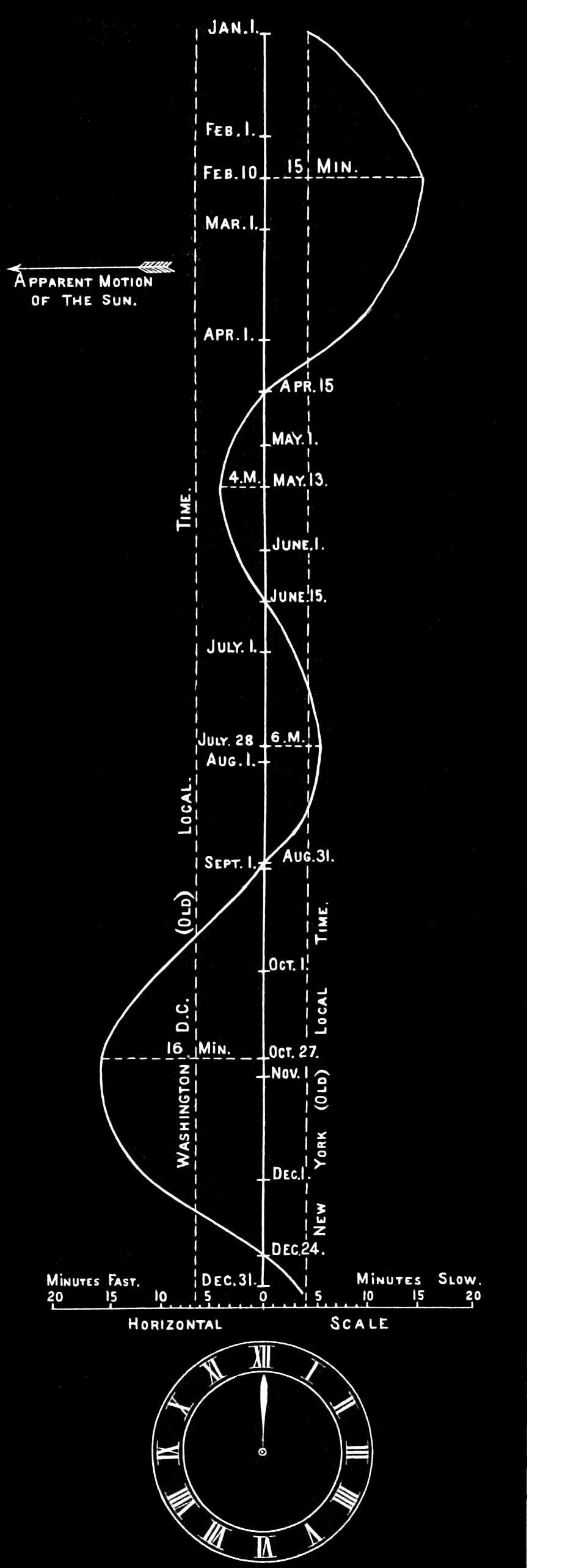 Fig 1.—Diagram showing comparison of Mean (or Clock) Time with Solar (or apparent) Time, at the several Seasons of the Year. The perpendicular central time represents Mean Time, and the curved line Solar Time, at mean noon.differed by more than half an hour from mean local time at various points. The inhabitants of the surrounding country at such points, having no standard of reference except the railway-clocks, accustomed themselves to and used railway-time without inconvenience, and in a number of instances, where the railway standard was changed from some cause, the people made the same change in their time-pieces. It was important in connection with railway-trains to keep exact time, and for all other purposes any relative time was sufficiently accurate.
Fig 1.—Diagram showing comparison of Mean (or Clock) Time with Solar (or apparent) Time, at the several Seasons of the Year. The perpendicular central time represents Mean Time, and the curved line Solar Time, at mean noon.differed by more than half an hour from mean local time at various points. The inhabitants of the surrounding country at such points, having no standard of reference except the railway-clocks, accustomed themselves to and used railway-time without inconvenience, and in a number of instances, where the railway standard was changed from some cause, the people made the same change in their time-pieces. It was important in connection with railway-trains to keep exact time, and for all other purposes any relative time was sufficiently accurate.
In the early part of the year 1883 there were fifty-three standards of time in use on the railroads and by the people of the United States and Canada. These standards governed sections with no definite limits, and upon railroad lines were apparently inextricably mixed and interwoven. The condition of the matter was abnormal in numerous instances, there being no less than three hundred points where railroads, using different standards of time, crossed each other and exchanged traffic. At almost every city of importance several standards were used by the railways, and in some cases the city time differed from any of them. Local jealousies made the chance of effecting reform apparently hopeless. Many who warmly favored standard time regarded the reform as one unlikely to be soon accomplished.
The solution of the problem necessarily required a close and long--
